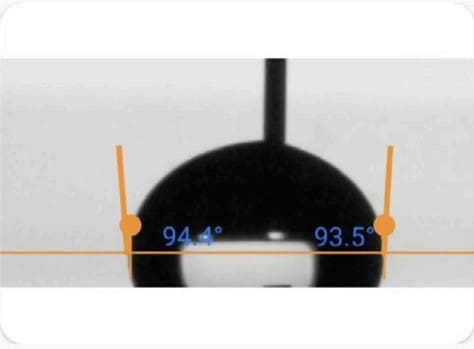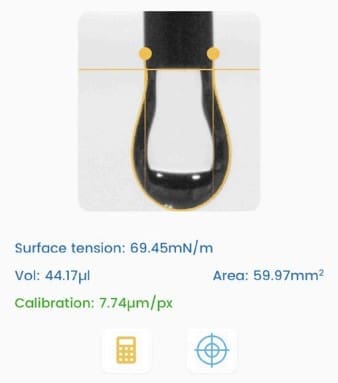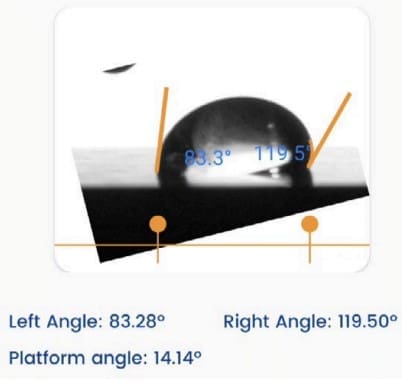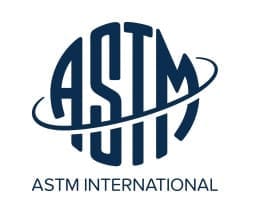Reviewed: 28
This is a practical guide to Surface Science for researchers working in the Fabrics Industry.
In this all-new guide you’ll learn all about:
Let’s dive right in.

The fabric industry heavily relies on surface property measurements. Analyzing these properties involves both physical and chemical aspects of the surface. For instance, the high demand for water-repellent and stain-resistant fabrics that are also breathable drives the need for precise measurements. Breathability, directly related to air permeability, is clearly defined in the ASTM D737 standard.

We use the important surface properties below to understand the behavior of Fabrics products and improve their quality.

Young – Laplace Method
Polynomial Method
Dynamic Contact Angle
Ideally, when we place a drop on a solid surface, a unique angle exists between the liquid and the solid surface. We can calculate the value of this ideal contact angle (the so-called Young’s contact angle) using Young’s equation. In practice, due to surface geometry, roughness, heterogeneity, contamination, and deformation, the contact angle value on a surface is not necessarily unique but falls within a range. We call this range’s upper and lower limits the advancing contact angle and the receding contact angle, respectively. The values of advancing and receding contact angles for a solid surface are also very sensitive. They can be affected by many parameters, such as temperature, humidity, homogeneity, and minute contamination of the surface and liquid. For example, the advancing and receding contact angles of a surface can differ at different locations.
Practical surfaces and coatings naturally show contact angle hysteresis, indicating a range of equilibrium values. When we measure static contact angles, we get a single value within this range. Solely relying on static measurements poses problems, like poor repeatability and incomplete surface assessment regarding adhesion, cleanliness, roughness, and homogeneity.
In practical applications, we need to understand a surface’s liquid spreading ease (advancing angle) and removal ease (receding angle), such as in painting and cleaning. Measuring advancing and receding angles offers a holistic view of liquid-solid interaction, unlike static measurements, which yield an arbitrary value within the range.
This insight is crucial for real-world surfaces with variations, roughness, and dynamics, aiding industries like cosmetics, materials science, and biotechnology in designing effective surfaces and optimizing processes.
Learn how Contact Angle measurement is done on our Tensiometer
For a more complete understanding of Contact Angle measurement, read our Contact Angle measurement: The Definitive Guide
This property measures the force that acts on the surface of a liquid, aiming to minimize its surface area.

Dynamic Surface Tension
Dynamic surface tension differs from static surface tension, which refers to the surface energy per unit area (or force acting per unit length along the edge of a liquid surface).
Static surface tension characterizes the equilibrium state of the liquid interface, while dynamic surface tension accounts for the kinetics of changes at the interface. These changes could involve the presence of surfactants, additives, or variations in temperature, pressure, and composition at the interface.
Dynamic surface tension is essential for processes that involve rapid changes at the liquid-gas or liquid-liquid interface, such as droplet and bubble formation or coalescence (change of surface area), behavior of foams, and drying of paints (change of composition, e.g., evaporation of solvent). We measure it by analyzing the shape of a hanging droplet over time.
Dynamic surface tension applies to various industries, including cosmetics, coatings, pharmaceuticals, paint, food and beverage, and industrial processes, where understanding and controlling the behavior of liquid interfaces is essential for product quality and process efficiency.
Learn how Surface Tension measurement is done on our Tensiometer
For a more complete understanding of Surface Energy measurement, read our Surface Tension measurement: The Definitive Guide

Learn how Surface Energy measurement is done on our Tensiometer
For a more complete understanding of Surface Energy measurement, read our Surface Energy measurement: The Definitive Guide
The sliding angle measures the angle at which a liquid film slides over a solid surface. It is commonly employed to assess the slip resistance of a surface.

Learn how Sliding Angle measurement is done on our Tensiometer
For a more complete understanding of Sliding Angle measurement, read our Sliding Angle Measurement: The Definitive Guide
Within the Fabrics industry, several case studies exemplify the advantages of conducting surface property measurements.
An outdoor gear company, obsessed with crafting weatherproof gear, meticulously measures water droplet interaction with their fabrics to achieve ultimate water repellency. They essentially gauge how much water “wants” to stick to the fabric, ensuring raindrops roll off instead of soaking through. By meticulously analyzing these measurements, they guarantee their products keep adventurers dry and comfortable.


In the captivating world of printing intricate designs on textiles with inkjet technology, experts meticulously tweak the fabric’s surface properties to ensure the perfect canvas. Textile and printing companies analyze surface tension and contact angles, not passively observing, but actively manipulating them to guarantee the fabric flawlessly holds the ink. This meticulous attention to detail prevents smudging and blurring, resulting in sharp, vibrant, and eye-catching patterns that come alive on the fabric.
If you are interested in implementing these or any other applications, please contact us.
In an industry where precision reigns supreme, where do Fabrics manufacturers turn to ensure their products can survive scrutiny? The answer lies in standards and guidelines: the compass that guides cosmetics manufacturers through the complex maze of quality and performance.

This standard provides the standard practice for surface wettability of coatings, substrates, and pigments by advancing contact angle measurement. As per this standard, hydrophilic and hydrophobic surfaces are defined for the contact angle <45 and >90 respectively. A surface between hydrophilic and hydrophobic comes under the angle between 45 and 90. Water can be used as a test liquid for contact angle measurement.

This series provides the description of optical test methods to measure the contact angle, to determine the free surface energy of a solid surface and the surface tension of liquids. These descriptions are applicable to the characterization of substrates, coatings, and coating materials.
We hope this guide showed you how to apply surface science in cosmetics industry.
Now we’d like to turn it over to you:
Droplet Lab was founded in 2016 by Dr. Alidad Amirfazli, faculty member at York University, and two of his researchers, Dr. Huanchen Chen and Dr. Jesus L. Muros-Cobos.
Dropletlab © 2024 All Rights Reserved.